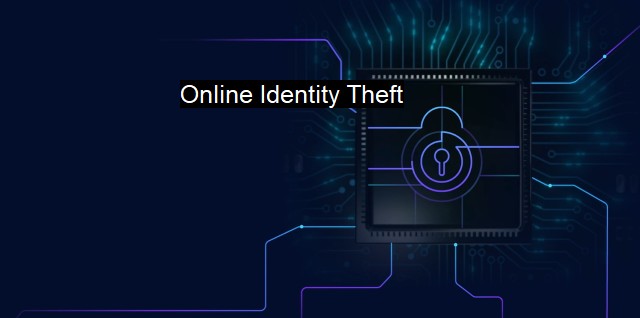What is Online Identity Theft?
Protecting Your Digital Life: The Growing Concern of Online Identity Theft and How Antivirus Software Can Help Safeguard Your Personal and Financial Information
Online identity theft, prevalent in the modern age of technology and internet, intrudes categories of significant perturbations in the domains of cybersecurity. It is essentially a technologically driven, maligned means of exploiting user data to satisfy the unethical motives of hackers and intruders. Directly challenging antivirus strategies, it is credited with causing considerable loss and distress to individuals worldwide, thereby nudging cybercrime to alarming heights.Online identity theft is primarily a a cybercrime where criminals, popularly termed as identity thieves, exploit the confidential and substantial data of unsuspecting victims. It denotes the illegal utilization of someone else’s personal credentials, such as their usernames, passwords, credit card numbers, social security numbers, and additional pivotal information, thereby compromising their online identity.
In more sophisticated terms, online identity theft or synthetic identity theft involves mixing false information with veritably stolen data to indeed engineer a composite virtual identity. The thieves extricate fragments of precise data from various individual victims and amalgamate them coherently into a faux identity. Once they succeed in pilfering enough information, they can embark on a vicious spree, ticking off online monetary transactions, applying for corrupt loans, devising phishing attacks, or even spawning misinformation on social media.
Holistically, the context of cybersecurity is directly challenged by online identity theft, consecrating extensive vulnerabilities. With the unabated progress and endurance of technology, various platforms such as social media, online shopping, internet banking, email exchanges et al., where personal and intimate data are shared, have become favored arenas for online identity theft. In observance of this alarming drift, developing impervious cybersecurity gates is mandatory.
With an objective to safeguard online identities, various incorporating mechanisms have been devised such as complex and changeable passwords, two-step or multi-factor authentications, password encryption techniques, biometric security protocols like fingerprint security, iris scanning to name a few. These measures are often strengthened with antivirus software designed to detect and eradicate the malware and spyware likely to scrape salient information from unprotected systems, a common technique incorporated by online identity thieves.
Antivirus software plays a crucial role in preventing online identity theft. It provides maximum protection to systems, scrutinizing every file that enters the system, either through the Internet or from an External device. Consequentially, if an anomalous piece detected in a file by the antivirus software can not be remedied, it promptly isolates the corrupted file and barricades it from contaminating the rest of the system.
Timely updating of antivirus software versions and definitions is also significant. The threat of new malware looms constantly, and antivirus software has to stay updated with knowledge of these threats to effectively counter them. The strength of the firewall is also an integral aspect to shield users from incoming threats which could potentially usurp online identity.
At the lieu of conclusion, online identity theft today is an area of increasing consternation in cybersecurity. It is incumbent upon people and organizations alike to understand the technicalities of the various safeguards, efficient antivirus software included, in their arsenal to secure their own and others' personal fragments of data herborely. It becomes a shared responsibility to foster a safer internet environment undeterred by the chances of potential exploitation of personal data looming in the extensive, variegated terrain of online platforms.

Online Identity Theft FAQs
What is online identity theft?
Online identity theft is a type of cybercrime where an attacker gains access to your personal information, such as login credentials, social security numbers, or financial details, for fraudulent purposes.How does online identity theft occur?
Online identity theft can occur through various methods like phishing scams, malware-infected websites, or public Wi-Fi networks. Attackers can use these methods to trick you into sharing your personal information, or they can use malicious software to steal it directly.How can I protect myself from online identity theft?
You can protect yourself from online identity theft by using strong passwords, avoiding suspicious emails or links, keeping your antivirus software up-to-date, and being careful when using public Wi-Fi networks. Additionally, it's a good idea to regularly monitor your financial accounts and credit reports for any unauthorized activity.What should I do if I think I've been a victim of online identity theft?
If you think you've been a victim of online identity theft, you should immediately contact your bank, credit card companies, and any other financial institutions you use. You should also report the incident to the Federal Trade Commission (FTC) and file a police report. It's important to act quickly to minimize the damage and prevent further fraudulent activity.| | A | | | B | | | C | | | D | | | E | | | F | | | G | | | H | | | I | | | J | | | K | | | L | | | M | |
| | N | | | O | | | P | | | Q | | | R | | | S | | | T | | | U | | | V | | | W | | | X | | | Y | | | Z | |
| | 1 | | | 2 | | | 3 | | | 4 | | | 7 | | | 8 | | |||||||